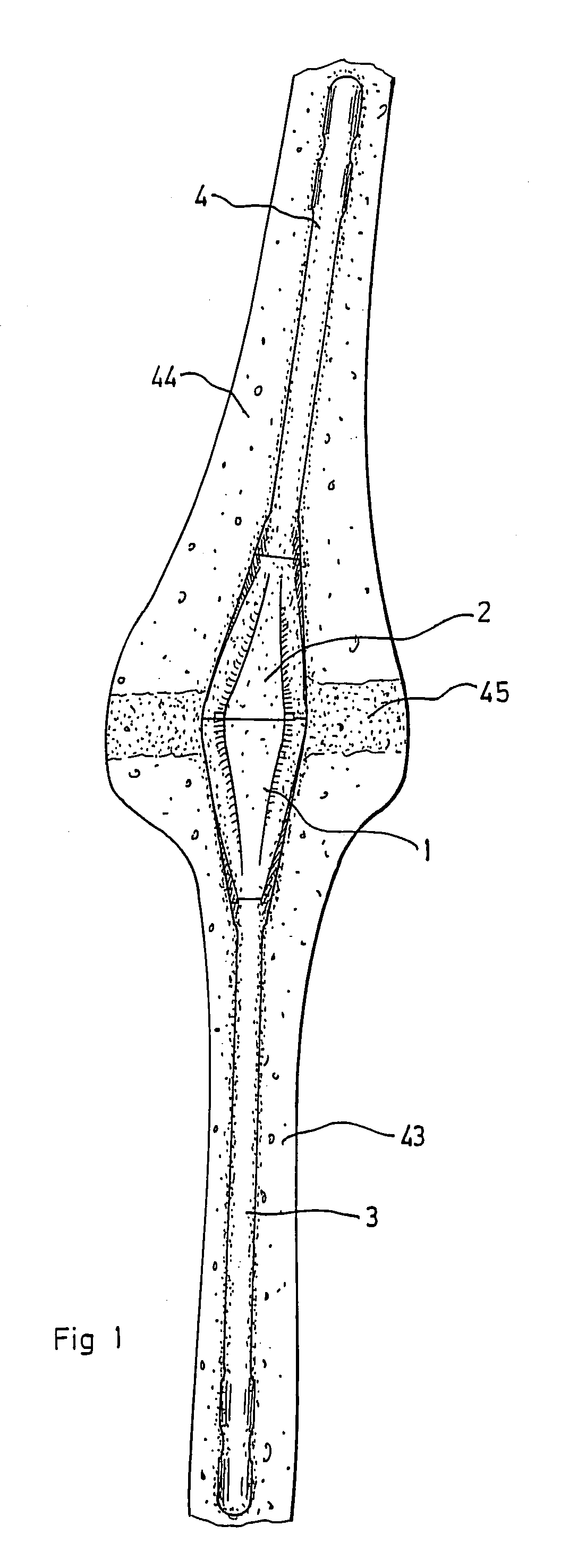Implantable orthesis and surgical kit for knee arthrodesis
- Summary
- Abstract
- Description
- Claims
- Application Information
AI Technical Summary
Benefits of technology
Problems solved by technology
Method used
Image
Examples
Embodiment Construction
[0037]The orthesis according to the invention shown in the Figures comprises a proximal tibial anchoring head 1, a proximal femoral anchoring head 2, a distal tibial intramedullary rod 3 and a distal femoral intramedullary rod 4. It is thus composed of four principal parts, in addition to three screws 9, 13, 28 for securing and tightening these parts to one another.
[0038]To avoid any errors of assembly, the fasteners of the tibial rod 3 onto the tibial anchoring head 1 are not compatible with the fasteners of the femoral rod on the femoral anchoring head 2.
[0039]For the assembly of the femoral anchoring head 2 on the intramedullary femoral rod 4, the latter is equipped with a male assembly cone 5 adapted so as to be able to be introduced into a conjugate female cone 6 of the femoral anchoring head 2. The end of the male cone 5 has a depression 7 forming a bearing support 8 for the free end of a tightening screw 9 introduced into a threaded bore 10 of the femoral anchoring head 2. Th...
PUM
 Login to View More
Login to View More Abstract
Description
Claims
Application Information
 Login to View More
Login to View More - R&D
- Intellectual Property
- Life Sciences
- Materials
- Tech Scout
- Unparalleled Data Quality
- Higher Quality Content
- 60% Fewer Hallucinations
Browse by: Latest US Patents, China's latest patents, Technical Efficacy Thesaurus, Application Domain, Technology Topic, Popular Technical Reports.
© 2025 PatSnap. All rights reserved.Legal|Privacy policy|Modern Slavery Act Transparency Statement|Sitemap|About US| Contact US: help@patsnap.com



